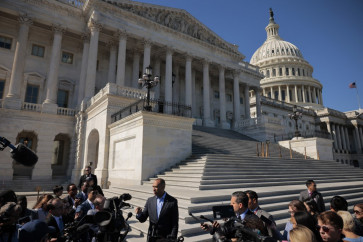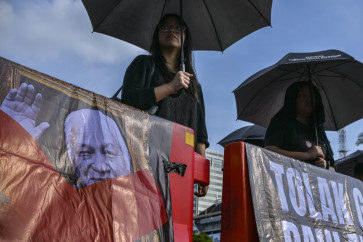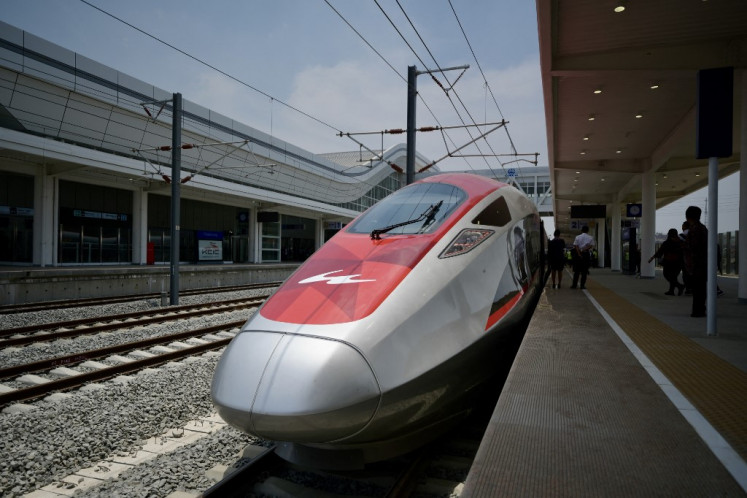Popular Reads
Top Results
Can't find what you're looking for?
View all search resultsPopular Reads
Top Results
Can't find what you're looking for?
View all search resultsPLN to extend deadline for power projects
Grappling with lower-than-expected electricity sales, state-owned firm PLN has finally decided to extend the deadline to begin the operation of contracted power plants under the flagship 35,000-megawatt (MW) program
Change text size
Gift Premium Articles
to Anyone
G
rappling with lower-than-expected electricity sales, state-owned firm PLN has finally decided to extend the deadline to begin the operation of contracted power plants under the flagship 35,000-megawatt (MW) program.
President Joko “Jokowi” Widodo’s administration has planned to procure electricity amounting to 35,847 MW by 2019 from various types of power plants in order to achieve a 30 percent surplus in the domestic electricity reserve margin, namely the gap between the capacity and peak demand. The surplus level is considered healthy and would result in more efficient operational costs.
Of the total figure, PLN hopes to build power facilities with a capacity of 8,866 MW on its own, while independent power producers (IPP) will develop the remaining 26,981 MW.
Nevertheless, the country’s sole electricity offtaker had estimated its power sales only grew by around 4.1 percent throughout 2017. That is only half of the 8.3 percent annual increase of national electricity sales assumed in the development plan of these power plants.
PLN’s regional business director for eastern Java, Bali and Nusa Tenggara Djoko Rahardjo Abumanan conceded that the firm would revise the timeline for commencing operation of the designated power plants.
“As the growth was not as high as initially expected, we’ve decided to reschedule the COD [commercial operation date] of contracted power plant projects,” Djoko said on Wednesday.
As of last November, PLN had signed contracts with engineering, procurement and construction (EPC) contractors and sealed power purchase agreements (PPAs) with IPPs for power plant projects covering an overall capacity of 30,456 MW. Of the figure, only 3 percent have already started commercial operation.
Djoko said PLN would suffer from the take-or-pay clause in its purchase deals with IPPs if it insisted on moving forward with the original deadline to finish the mega power projects.
As stipulated by the clause, PLN must pay for the electricity supplied by IPP-built power facilities even if it does not need it.
Consequently, PLN is adjusting the COD in line with current electricity consumption, Djoko added.
“We predict that the total capacity of power plants operational by 2019 will be only 22,000 MW,” he said.
The extended deadline may affect, among other plants, the Indramayu II coal-fired power plant in West Java worth US$4 billion. The construction of the 2,000 MW power facility is projected to begin in 2019 at the earliest, after initially being scheduled for last October.
Furthermore, PLN also plans to postpone the construction of 1,700 MW power plants, some of which it will build on its own. It will, however, kick off the projects before 2019.
“It may only take six months to construct these plants as they are [mostly] gas-fueled facilities,” Djoko said.
In addition to the power plants, PLN also aims to develop 46,760 kilometers of transmission circuits and 1,375 substation units, equivalent to 108,789 mega volt amperes (MVA) by 2019.
According to an estimate, PLN will need to disburse Rp 585 trillion (US$43.75 billion) for the development of the entire electricity infrastructure, including Rp 200 trillion for its fully-owned power plants and the rest for transmission circuits and substation units.
Nevertheless, as of last August, the electricity firm had only managed to secure financing commitments worth Rp 117 trillion, including ones from the World Bank and the Asian Development Bank (ADB). Of the figure, just
Rp 62 trillion of debt had been disbursed.
In the first nine months of 2017, PLN’s net profit plummeted by 72.2 percent year-on-year to Rp 3.04 trillion, while its total liabilities grew 11.2 percent annually to Rp 429.3 trillion.
Institute for Essential Services Reform (IESR) executive director Fabby Tumiwa has previously thrown his support behind PLN’s plan to amend the timeline of the power projects under the 35,000 MW program.
“If the plan remains unchanged, there will likely be an oversupply that threatens PLN’s financial health,” he said.










